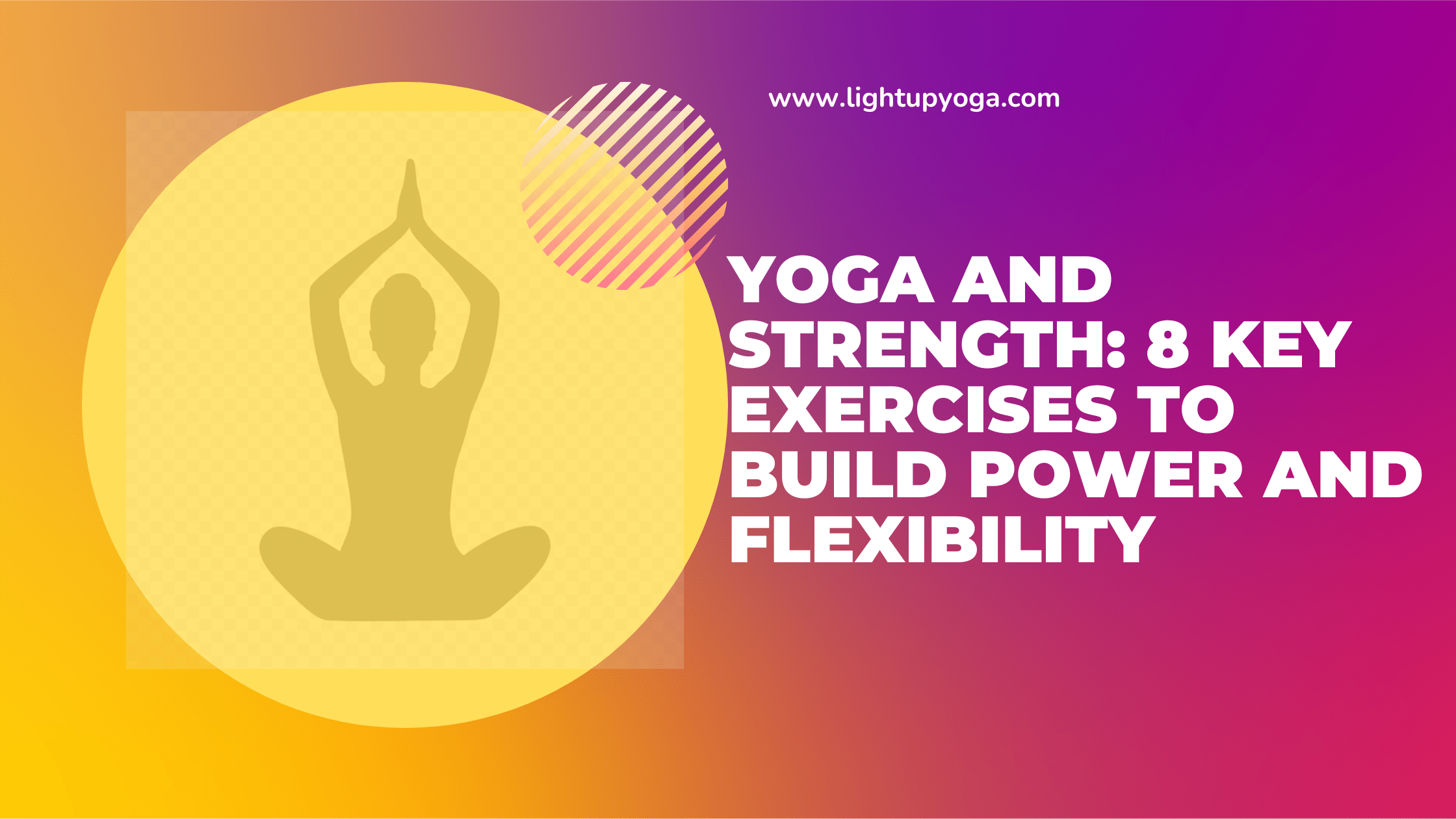
Introduction
Yoga is an amazing way to improve your flexibility, mindfulness, and overall health. Through its calming movements and focus on breathing, yoga helps reduce stress and increase mental clarity. It enhances your connection to your body and mind, creating a sense of balance and peace. At the same time, yoga promotes better circulation, strengthens your muscles, and supports your joints, making it a holistic approach to wellness. But did you know that adding strength training to your routine can make your yoga practice even better? Strength training helps you build stronger muscles, hold challenging poses longer, avoid injuries, and improve your endurance.
Many people focus only on either strength or flexibility, often because they think excelling in one area means sacrificing the other. However, combining the two is the best way to create a balanced and strong body. This synergy allows you to build power while maintaining the range of motion needed for smooth, controlled movements. For yogis, this balance means you can handle tough poses with more stability and control while keeping your movements smooth and relaxed.
This guide will show you eight simple strength training exercises that are great for yogis. By including these in your routine, you can boost your power and stability and take your yoga practice to the next level.
Why Strength Training is Important for Yogis
Yoga is great for flexibility and focus, but strength training adds benefits like:
🏋️♀️ Better Stability: Strong muscles protect your joints and help you stay steady in tricky poses like arm balances or backbends. This stability is also useful for balancing poses like Tree Pose.
🏋️ Improved Alignment: Strengthened muscles help you keep good posture during poses like Warrior III and Half Moon. This prevents your body from overcompensating and reduces strain.
⌛ Increased Endurance: When your muscles are stronger, you can hold poses longer and move through flows without getting tired as quickly.
❤️ Overall Health Benefits: Strength training improves your bone strength, metabolism, and helps you stay active in daily life. It makes your body more resilient overall.
By combining yoga and strength training, you’ll build a body that’s strong, flexible, and ready for anything. Plus, having stronger muscles can boost your confidence as you tackle more challenging poses.
8 Strength Training Exercises for Yogis
1. Plank Holds

Focus Areas: Core, shoulders, and arms.
How to Do It: Start in a high plank with your hands under your shoulders. Keep your body in a straight line and engage your core. Hold for 20-60 seconds. For extra challenge, lift one leg.
Why It Helps: Plank builds core strength, which is key for poses like Chaturanga and Crow Pose. A strong core also makes transitions, like stepping into Warrior I, easier.
2. Push-Ups

Focus Areas: Chest, shoulders, triceps, and core.
How to Do It: Start in a plank position and lower your body until your chest is close to the ground. Push back up. Keep your elbows close to your body for a yoga-inspired version. Try elevating your feet for more intensity.
Why It Helps: Push-ups strengthen your upper body, helping with arm balances and inversions. They also prepare your shoulders for poses like Wheel Pose.
3. Deadlifts with Dumbbells

Focus Areas: Hamstrings, glutes, and lower back.
How to Do It: Hold dumbbells, hinge at your hips, and lower them toward the ground while keeping your back straight. Return to standing. Keep a slight bend in your knees.
Why It Helps: Deadlifts strengthen the back of your body, helping with forward folds and backbends. Strong hamstrings also make balancing poses steadier.
4. Lunges

Focus Areas: Legs and core.
How to Do It: Step one foot forward into a lunge, keeping your front knee over your ankle. Lower your back knee toward the floor, then return to standing. Use dumbbells for more difficulty.
Why It Helps: Lunges strengthen your legs and improve balance for poses like Warrior II. They also help with coordination when moving into one-legged poses.
5. Pull-Ups (or Rows)

Focus Areas: Back, shoulders, and arms.
How to Do It: Use a pull-up bar or do dumbbell rows. If pull-ups are too hard, use a resistance band for help.
Why It Helps: A strong back improves posture for poses like Upward-Facing Dog and gives you the strength for arm balances.
6. Bridge Lifts

Focus Areas: Glutes, hamstrings, and lower back.
How to Do It: Lie on your back, bend your knees, and press through your heels to lift your hips. Lower back down. To make it harder, lift one leg while raising your hips.
Why It Helps: Bridge lifts prepare your body for backbends like Wheel Pose. They also connect your core and lower body for poses like Chair Pose.
7. 💪 Shoulder Press with Dumbbells

Focus Areas: Shoulders and triceps.
How to Do It: Hold dumbbells at shoulder height and press them overhead. Lower them back down slowly. Keep your core engaged to protect your back.
Why It Helps: Strong shoulders are crucial for poses like Handstand. They also help with transitions where you lift your body weight.
8. Squats

Focus Areas: Legs and core.
How to Do It: Stand with your feet shoulder-width apart, lower your hips like sitting in a chair, then stand back up. Add weight or do jump squats for more intensity.
Why It Helps: Squats build leg strength for poses like Tree Pose. They also improve hip mobility for smoother transitions.
How to Add Strength Training to Your Yoga Practice
Here’s how to make strength training part of your routine:
⌚ Example Weekly Schedule:
Monday: Strength training session focusing on upper body (e.g., push-ups, pull-ups, shoulder press).
Tuesday: Yoga practice emphasizing flexibility and recovery.
Wednesday: Strength training session for lower body (e.g., squats, lunges, deadlifts).
Thursday: Rest day or light yoga for relaxation.
Friday: Full-body strength training session (e.g., combining planks, bridge lifts, and rows).
Saturday: Yoga practice integrating balance and strength poses.
Sunday: Active recovery with gentle stretching or restorative yoga.
✨ Start Small: Do 2-3 sessions a week to begin with. Focus on proper form before adding more weight or intensity.
🎩 Mix It Up: Alternate between yoga and strength days, or include strength exercises during your yoga practice. For example, add plank holds to your Sun Salutations.
🌟 Warm-Up: Stretch before you start. Poses like Cat-Cow or Downward Dog are great for warming up your muscles.
❄ Cool Down: End your session with yoga stretches like Child’s Pose or Forward Fold to relax your muscles and prevent soreness.
🏃️♀️ Listen to Your Body: Rest when you need to, and don’t push too hard. Balance is the key to improving both strength and flexibility.
FAQs















Add comment